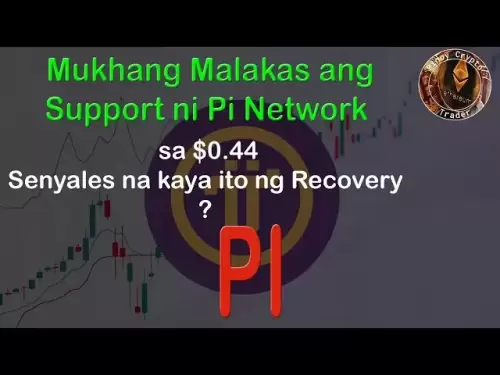-
 Bitcoin
Bitcoin $108,778.4882
0.68% -
 Ethereum
Ethereum $2,563.3783
2.01% -
 Tether USDt
Tether USDt $1.0001
-0.01% -
 XRP
XRP $2.2881
0.77% -
 BNB
BNB $662.2819
1.12% -
 Solana
Solana $152.2652
3.21% -
 USDC
USDC $0.9999
-0.01% -
 TRON
TRON $0.2873
0.90% -
 Dogecoin
Dogecoin $0.1715
4.20% -
 Cardano
Cardano $0.5868
1.50% -
 Hyperliquid
Hyperliquid $39.6796
1.73% -
 Sui
Sui $2.9136
0.85% -
 Bitcoin Cash
Bitcoin Cash $495.4980
1.77% -
 Chainlink
Chainlink $13.5765
3.06% -
 UNUS SED LEO
UNUS SED LEO $9.0753
0.53% -
 Stellar
Stellar $0.2503
3.73% -
 Avalanche
Avalanche $18.2012
1.86% -
 Shiba Inu
Shiba Inu $0.0...01174
1.83% -
 Toncoin
Toncoin $2.7998
-6.08% -
 Hedera
Hedera $0.1596
3.89% -
 Litecoin
Litecoin $87.3119
0.20% -
 Monero
Monero $319.5596
1.08% -
 Polkadot
Polkadot $3.3887
0.93% -
 Dai
Dai $0.9999
-0.01% -
 Ethena USDe
Ethena USDe $1.0001
-0.01% -
 Bitget Token
Bitget Token $4.3294
-1.36% -
 Uniswap
Uniswap $7.3898
1.60% -
 Aave
Aave $287.5336
5.76% -
 Pepe
Pepe $0.0...01005
3.24% -
 Pi
Pi $0.4588
1.90%
What is a 51% attack? How can blockchain prevent this security threat?
A 51% attack occurs when an entity controls over half of a blockchain's mining power, allowing them to manipulate transactions and undermine the network's integrity.
Apr 05, 2025 at 04:28 am
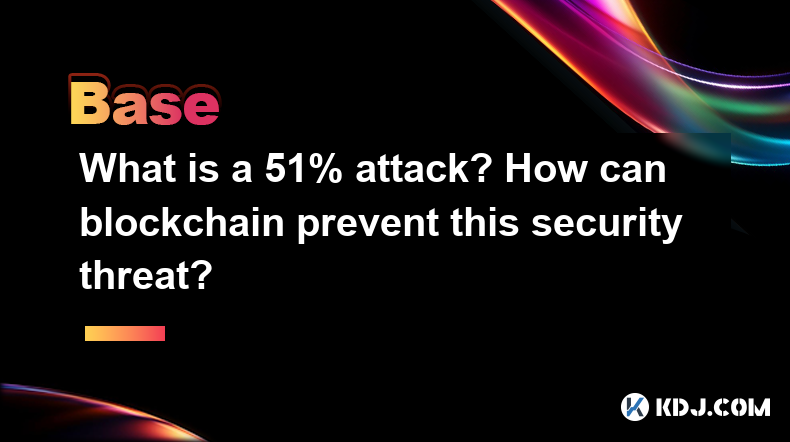
A 51% attack is a significant security threat in the world of cryptocurrencies, particularly those that operate on a proof-of-work (PoW) consensus mechanism. This type of attack occurs when a single entity or group gains control of more than half of the network's mining power or hash rate. With this majority control, the attacker can manipulate the blockchain by double-spending coins, preventing the confirmation of new transactions, or even reversing transactions that were previously confirmed. The term "51% attack" stems from the idea that controlling just over half of the network's power is theoretically enough to execute such an attack, although in practice, a higher percentage might be needed for a successful and sustained attack.
How Does a 51% Attack Work?
In a 51% attack, the attacker leverages their majority control to create a longer blockchain fork than the one recognized by the rest of the network. Here's how it unfolds:
- The attacker starts mining a private blockchain fork, which is not broadcast to the network.
- They continue mining blocks on this private fork while the public blockchain continues to grow.
- Once the private fork becomes longer than the public blockchain, the attacker releases it to the network.
- The network, following the longest chain rule, accepts the attacker's fork as the valid blockchain.
- The attacker can now double-spend coins by spending them on the public chain and then releasing their longer private chain, effectively reversing the transaction.
This manipulation can lead to significant financial losses for users and undermine trust in the cryptocurrency.
Real-World Examples of 51% Attacks
Several cryptocurrencies have fallen victim to 51% attacks in the past. For instance, in 2018, Bitcoin Gold suffered a 51% attack, resulting in the theft of millions of dollars worth of the cryptocurrency. Similarly, Ethereum Classic experienced multiple 51% attacks in 2020, with attackers double-spending and reorganizing the blockchain. These incidents highlight the vulnerability of smaller networks with less decentralized mining power.
Preventing 51% Attacks: Strategies and Solutions
To mitigate the risk of 51% attacks, blockchain networks can implement several strategies:
Increasing Network Decentralization
Decentralization is key to preventing 51% attacks. The more decentralized a network is, the harder it becomes for a single entity to gain control over the majority of the mining power. This can be achieved by:
- Encouraging a diverse range of miners to participate in the network.
- Implementing mining algorithms that are resistant to ASICs (Application-Specific Integrated Circuits), which can help prevent large mining pools from dominating the network.
Implementing Checkpoints
Some blockchain networks use checkpoints to prevent 51% attacks. Checkpoints are pre-defined blocks that are considered valid by the network, and any attempt to alter the blockchain before these checkpoints is rejected. This method can help protect against attacks but may compromise the decentralized nature of the blockchain.
Using Alternative Consensus Mechanisms
Switching from a proof-of-work (PoW) consensus mechanism to alternatives like proof-of-stake (PoS) or delegated proof-of-stake (DPoS) can also help prevent 51% attacks. In PoS, validators are chosen to create new blocks based on the number of coins they hold and are willing to "stake" as collateral. This makes it economically unfeasible for an attacker to acquire enough coins to launch a 51% attack.
Monitoring and Alert Systems
Implementing monitoring and alert systems can help detect potential 51% attacks early. These systems can track unusual patterns in mining activity and alert the community to take action, such as temporarily halting transactions or implementing emergency measures to protect the network.
The Role of Economic Incentives
Economic incentives play a crucial role in preventing 51% attacks. In a PoW system, miners are rewarded for their work with newly minted coins and transaction fees. Launching a 51% attack would require significant investment in mining hardware and electricity, and the potential financial gain from the attack might not outweigh the costs. Additionally, a successful attack could devalue the cryptocurrency, further reducing the attacker's potential profit.
The Importance of Community Vigilance
Community vigilance is another essential factor in preventing 51% attacks. An active and engaged community can quickly identify and respond to suspicious activities on the network. This includes monitoring mining pools, reporting unusual transactions, and participating in governance decisions that can enhance the network's security.
Technical Measures to Enhance Security
Beyond the strategies mentioned, there are technical measures that can be implemented to enhance the security of a blockchain against 51% attacks:
- Increasing the block confirmation time: By requiring more confirmations for a transaction to be considered final, the network can make it more difficult for an attacker to successfully execute a double-spend.
- Implementing a penalty system: Some networks penalize miners who attempt to launch a 51% attack by slashing their staked coins or imposing other financial penalties.
- Using a hybrid consensus mechanism: Combining different consensus mechanisms, such as PoW and PoS, can create a more robust system that is less susceptible to 51% attacks.
The Role of Exchanges and Wallets
Exchanges and wallets also play a crucial role in preventing the impact of 51% attacks. They can implement measures such as:
- Monitoring for double-spend attempts: Exchanges can use advanced algorithms to detect and prevent double-spend transactions, which are a common goal of 51% attacks.
- Implementing withdrawal delays: By delaying withdrawals, exchanges can give themselves time to verify the validity of transactions and prevent the release of funds that might be part of a double-spend attack.
- Educating users: Exchanges and wallet providers can educate their users about the risks of 51% attacks and the importance of waiting for multiple confirmations before considering a transaction final.
The Impact of 51% Attacks on Cryptocurrency Value
51% attacks can have a significant impact on the value of a cryptocurrency. When an attack occurs, it can lead to a loss of trust in the network, causing the price of the cryptocurrency to plummet. This loss of value can further exacerbate the impact of the attack, as it reduces the economic incentive for miners to continue supporting the network, potentially leading to a downward spiral.
Frequently Asked Questions
Q: Can a 51% attack be launched on a proof-of-stake (PoS) network?
A: While it is theoretically possible to launch a 51% attack on a PoS network, it is much more difficult and less likely to be successful. In a PoS system, an attacker would need to acquire a majority of the total staked coins, which is a significant financial investment. Additionally, many PoS networks implement slashing mechanisms that penalize validators who attempt to launch such an attack, further deterring potential attackers.
Q: How can individual users protect themselves from the effects of a 51% attack?
A: Individual users can take several steps to protect themselves from the effects of a 51% attack:
- Wait for multiple confirmations before considering a transaction final.
- Use exchanges and wallets that implement robust security measures, such as monitoring for double-spend attempts and implementing withdrawal delays.
- Diversify their cryptocurrency holdings to reduce the impact of an attack on any single network.
Q: Are all cryptocurrencies equally vulnerable to 51% attacks?
A: No, the vulnerability to 51% attacks varies among different cryptocurrencies. Smaller networks with less decentralized mining power are generally more susceptible to such attacks. Additionally, the consensus mechanism used by a cryptocurrency can impact its vulnerability, with PoW networks being more at risk than PoS networks.
Q: Can a 51% attack be reversed once it has occurred?
A: Reversing a 51% attack can be challenging and may not always be possible. If the attack is detected early, the community may be able to take action to prevent the attacker's fork from being accepted as the valid blockchain. However, once the attacker's fork has been accepted by the network, reversing the attack would require a hard fork, which can be a complex and contentious process.
Disclaimer:info@kdj.com
The information provided is not trading advice. kdj.com does not assume any responsibility for any investments made based on the information provided in this article. Cryptocurrencies are highly volatile and it is highly recommended that you invest with caution after thorough research!
If you believe that the content used on this website infringes your copyright, please contact us immediately (info@kdj.com) and we will delete it promptly.
- Bitcoin Wallet Hack? Coinbase Exec Sounds the Alarm on $8B Whale Movement
- 2025-07-07 18:30:12
- Mercado Bitcoin, Tokenization, and XRP Ledger: A Latin American Power Play
- 2025-07-07 18:30:12
- Ripple's RLUSD: Revolutionizing Cross-Margin Trading for Institutions
- 2025-07-07 18:35:12
- Babylon, Bitcoin, and the EVM Mainnet: A New Era for BTCFi?
- 2025-07-07 16:30:11
- Queen Elizabeth Coin Sells for £31,000: A Royal Fortune in Your Pocket?
- 2025-07-07 16:30:11
- XRP Price Check: Will Resistance Trigger a July Drop?
- 2025-07-07 17:10:12
Related knowledge
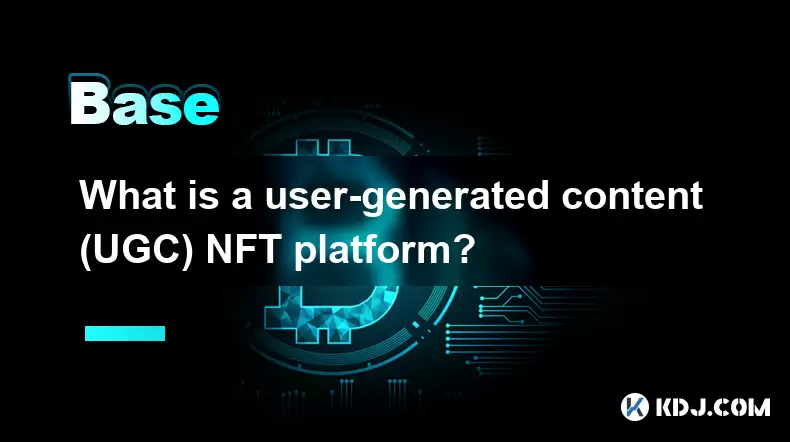
What is a user-generated content (UGC) NFT platform?
Jul 04,2025 at 01:49pm
Understanding the Concept of a UGC NFT PlatformA user-generated content (UGC) NFT platform is a digital marketplace or ecosystem where users can create, mint, and trade non-fungible tokens (NFTs) that represent ownership of original digital content they produce. Unlike traditional NFT platforms where creators often include professional artists or develo...

What is composability in DeFi?
Jul 06,2025 at 04:07pm
Understanding the Concept of Composability in DeFiComposability in DeFi refers to the ability of decentralized finance protocols and smart contracts to interact seamlessly with one another, much like building blocks that can be combined in various ways to create new financial products and services. This concept is a core innovation within the DeFi ecosy...
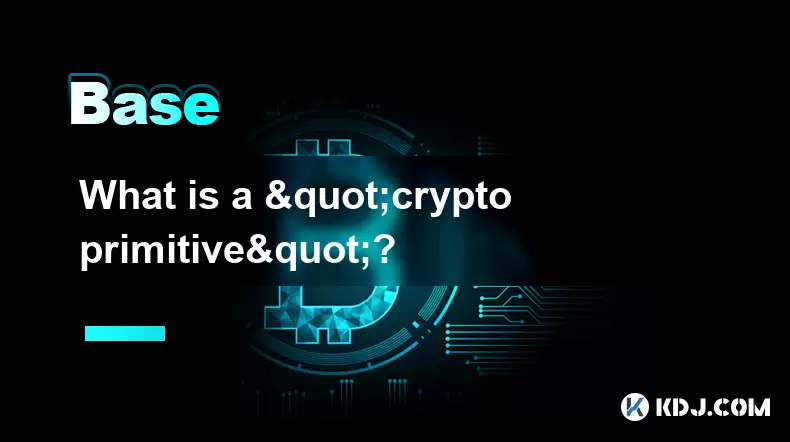
What is a "crypto primitive"?
Jul 05,2025 at 10:14pm
Defining the Concept of a Crypto PrimitiveIn the context of blockchain and cryptocurrency, a crypto primitive refers to a fundamental building block or foundational element used in constructing decentralized systems and cryptographic protocols. These primitives are essential for enabling secure transactions, consensus mechanisms, and smart contract exec...
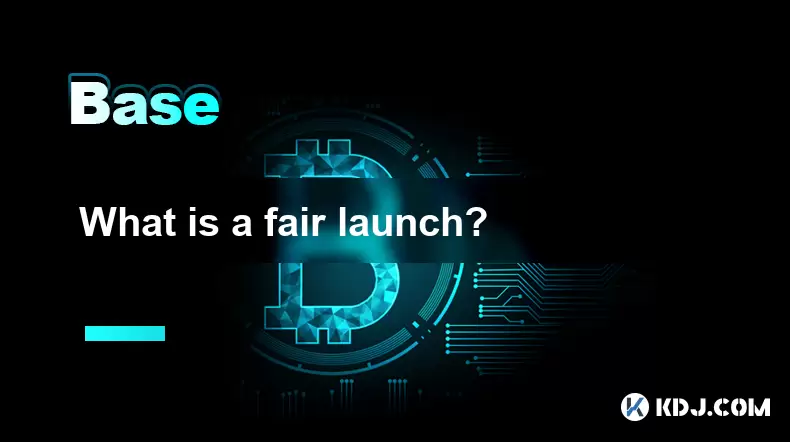
What is a fair launch?
Jul 05,2025 at 07:31pm
Understanding the Concept of a Fair LaunchA fair launch refers to the release of a cryptocurrency or blockchain project in a manner that ensures equal opportunity for all participants. Unlike traditional token launches, which may involve private sales, venture capital funding, or pre-mining, a fair launch emphasizes transparency and decentralization. In...
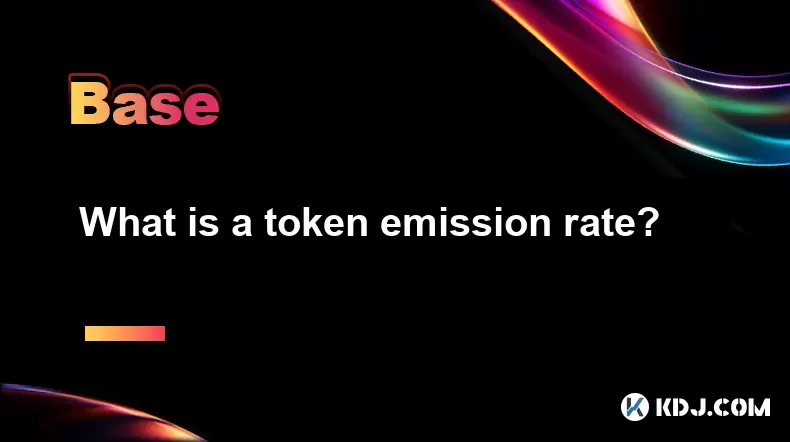
What is a token emission rate?
Jul 07,2025 at 02:51am
Understanding the Basics of Token Emission RateIn the realm of cryptocurrencies, token emission rate refers to the speed or frequency at which new tokens are generated and released into circulation within a blockchain network. This concept is fundamental in understanding how certain blockchain ecosystems manage inflation, incentivize participants, and m...
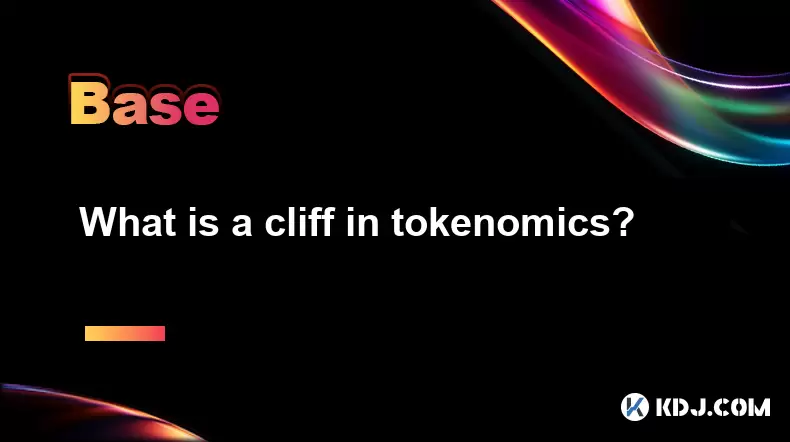
What is a cliff in tokenomics?
Jul 05,2025 at 07:18pm
Understanding the Concept of a Cliff in TokenomicsIn the world of cryptocurrency and blockchain, tokenomics plays a pivotal role in shaping the economic behavior of a digital asset. One of the key mechanisms used to manage token distribution is known as a cliff. This concept is commonly applied in projects that include vesting schedules for tokens, espe...

What is a user-generated content (UGC) NFT platform?
Jul 04,2025 at 01:49pm
Understanding the Concept of a UGC NFT PlatformA user-generated content (UGC) NFT platform is a digital marketplace or ecosystem where users can create, mint, and trade non-fungible tokens (NFTs) that represent ownership of original digital content they produce. Unlike traditional NFT platforms where creators often include professional artists or develo...

What is composability in DeFi?
Jul 06,2025 at 04:07pm
Understanding the Concept of Composability in DeFiComposability in DeFi refers to the ability of decentralized finance protocols and smart contracts to interact seamlessly with one another, much like building blocks that can be combined in various ways to create new financial products and services. This concept is a core innovation within the DeFi ecosy...

What is a "crypto primitive"?
Jul 05,2025 at 10:14pm
Defining the Concept of a Crypto PrimitiveIn the context of blockchain and cryptocurrency, a crypto primitive refers to a fundamental building block or foundational element used in constructing decentralized systems and cryptographic protocols. These primitives are essential for enabling secure transactions, consensus mechanisms, and smart contract exec...

What is a fair launch?
Jul 05,2025 at 07:31pm
Understanding the Concept of a Fair LaunchA fair launch refers to the release of a cryptocurrency or blockchain project in a manner that ensures equal opportunity for all participants. Unlike traditional token launches, which may involve private sales, venture capital funding, or pre-mining, a fair launch emphasizes transparency and decentralization. In...

What is a token emission rate?
Jul 07,2025 at 02:51am
Understanding the Basics of Token Emission RateIn the realm of cryptocurrencies, token emission rate refers to the speed or frequency at which new tokens are generated and released into circulation within a blockchain network. This concept is fundamental in understanding how certain blockchain ecosystems manage inflation, incentivize participants, and m...

What is a cliff in tokenomics?
Jul 05,2025 at 07:18pm
Understanding the Concept of a Cliff in TokenomicsIn the world of cryptocurrency and blockchain, tokenomics plays a pivotal role in shaping the economic behavior of a digital asset. One of the key mechanisms used to manage token distribution is known as a cliff. This concept is commonly applied in projects that include vesting schedules for tokens, espe...
See all articles























